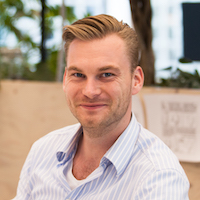Ons Memory and my trip to South Korea
As a side project I made an NFC-based memory game for children. This game was playable at the Nedap family day in October 2011, an open day for family and friends of Nedap employees. By using icons and characters from Nedap healthcare products, this was a fun way to boost our brand.
Ons Memory is a type of matching game. Instead of turning over two cards at a time, the player taps two cards with a mobile phone. The goal is still to find a matching pair. Completed pairs are not taken from the game, raising the difficulty level significantly.
There is an interesting background story to the Samsung phone displayed in the image below. In 2010 Nedap healthcare was facing a big challenge. Nokia, the only supplier of phones with NFC, had canceled the release of a new Nokia 6216 Classic model and also seized production of the existing Nokia 6212 Classic. With a rapidly growing business, we were in demand of a steady supply of Nokia NFC phones that could run our NFC-based time tracking application. Our backs were against the wall and we were scrambling to buy leftover bits of inventory from any place we could.
Just at the right time, Samsung released the S5230 Star-NFC, available on a limited basis for use in NFC trials. We were lucky to get hold of a few sample phones and as I had dabbled with iPhone app development before, I was asked to help in making our J2ME MIDlet compatible with the new Samsung Star NFC.
Despite hours of debugging, I could not get it to work. Our app detected the NFC tag fine, but as soon as I tried reading any of the data sectors an error occurred. I worked closely with Samsung’s software engineers in South Korea, but after weeks of mailing back and forth we did not came close to a solution. On the contrary, there was still no mutual understanding of the problem.
Time was running out and it was at that moment when Rob Schuurman, business unit manager of Nedap healthcare came to me and said: “If you think going to South Korea will give us only the slightest chance of success—just go.”
The next week I was boarding a flight to Seoul and after a bus ride to Gumi, I met in person with the Samsung engineer who I had been in contact with all the time. The next morning, we got down to business. Out of nowhere two NXP engineers showed up who had been flown in from the country’s capital. It seemed Samsung was serious about fixing this issue as well.
Using some kind of magic probing device the NXP engineers were able to snoop on the wireless connection between the phone and the NFC tag. They confirmed seeing the ‘read’ commands issued by my application. “Wait a minute”, said one of the engineers. “Isn’t this supposed to be an encrypted connection? We shouldn’t be able to see those commands in plain text at all!” The engineer from Samsung knew what to do, he opened his editor and changed the code to flow through the correct encryption routine.
The next few days were spend sightseeing in Seoul. When I landed back in Amsterdam and checked my inbox, I had just received the fixed Samsung Star firmware. A trip well worth taking.
- NFC
- J2ME
- MiFARE
- Determination









